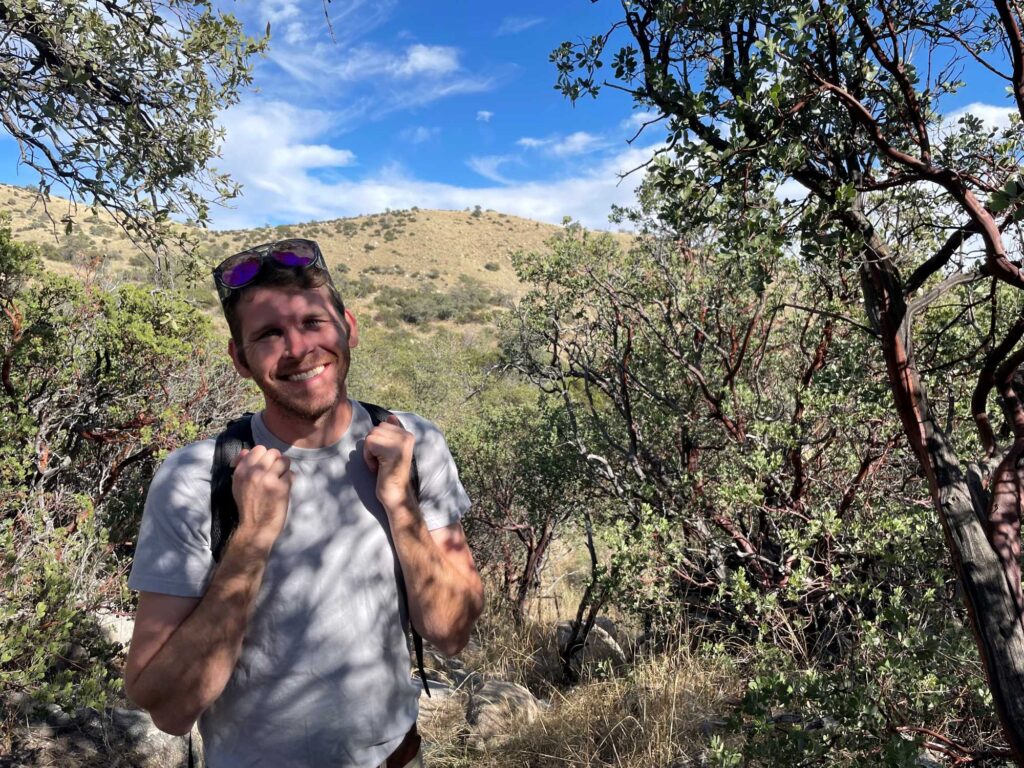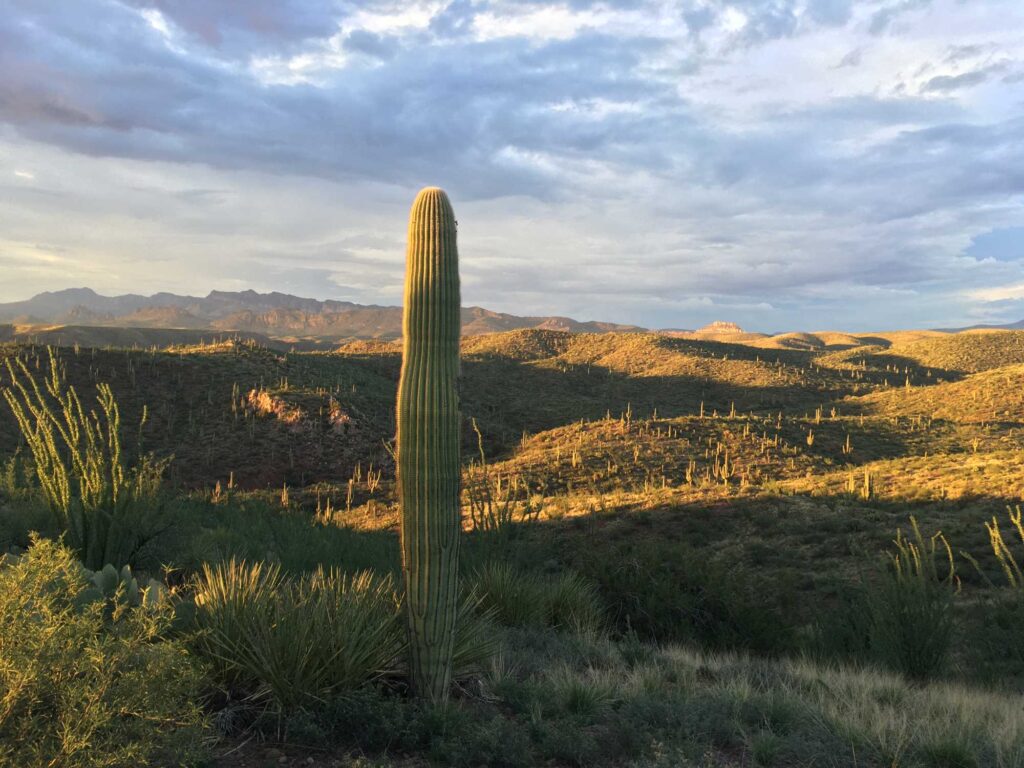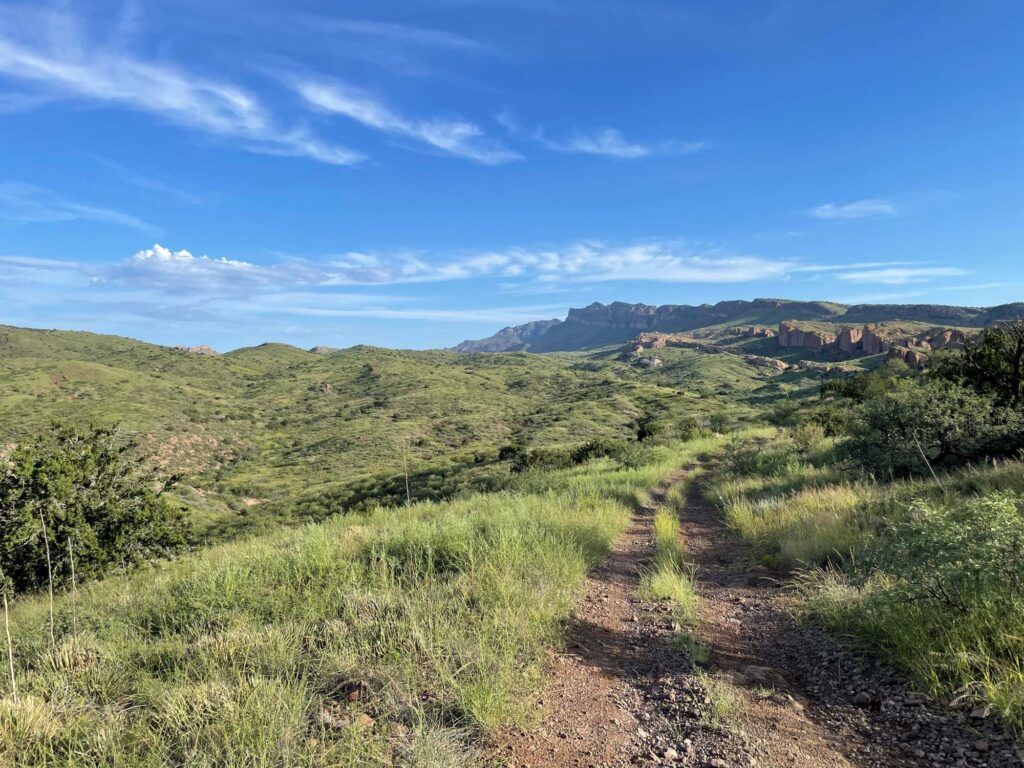- Home
- >
- Preservation Archaeology Blog
- >
- Community Stewardship in the San Pedro Valley
(October 6, 2023)—Hi all! As the new San Pedro Community Steward for Archaeology Southwest, I’m looking forward to promoting Preservation Archaeology and Tribes’ interests in the San Pedro Watershed and adjacent territory.

Here’s what brings me to this important work: I have lived and worked in Cascabel, Arizona, since 2013. Cascabel is a small community along the Middle San Pedro River, around 20 miles north of Benson. Since moving to Cascabel, I have worked for several local organizations, including the Cascabel Conservation Association, Saguaro Juniper Corporation, Lower San Pedro Watershed Alliance, Sweetwater Center, and The Nature Conservancy.
My background is in landscape conservation and environmental policy, with a B.S. in Natural Resources (specialization in wildlife conservation and management), and a soon-to-be-completed M.S. in Natural Resources (specialization in rangeland management). The thesis I’m completing is focused on environmental justice methods in National Environmental Policy Act (NEPA) reviews.
In the NEPA context, environmental justice means that agencies have to identify and address disproportionate adverse impacts to minority and low-income communities. That being said, there has been a recent shift to also provide positive impacts to environmental justice communities on federal projects. My research is looking specifically at how federal agencies have been evaluating and mitigating environmental justice impacts over the past decade, and how these methods can be improved in future decision-making.
In terms of my past experience with collaboration, I have worked as a Cascabel Conservation Association representative to the Lower San Pedro Collaborative. That effort has focused on developing a community fence plan to reduce the number of barbed-wire fences impacting wildlife connectivity in the Hot Springs Canyon–Paige Canyon area. In addition to the Cascabel Conservation Association, the collaboration engages with Saguaro National Park (East), Arizona Game & Fish Department, The Nature Conservancy, Arizona Desert Bighorn Sheep Society, Mule Deer Foundation, and interested landowners and individuals. Given that Archaeology Southwest owns property in the project area (the Baicatcan property, co-owned by Archaeology Southwest and the Cascabel Conservation Association), I will continue to be involved in supporting this project to open up the landscape across this important wildlife and cultural corridor.

Tribal issues interest me greatly, and one of the things that attracted me to the work is Archaeology Southwest’s Tribal Collaboration Model. In keeping up-to-date with Tribal issues, I look for appropriate recognition of Tribal sovereignty, as well as the appropriate application of the trust doctrine of the federal government. These federal policies (in addition to other laws concerning Tribal interests in archaeological preservation) only go so far, however. Archaeology Southwest is focused on promoting Tribal interests wherever possible, with Tribes having principal authority over the cultural landscape of the land we inhabit. Although collaboration takes time, I look forward to being able to promote Tribal interests.
I am particularly keen on using my position at Archaeology Southwest to boost landscape-scale conservation, to promote Tribal interests and sovereignty, and to expand collaborations among diverse agencies, organizations, and communities. I feel that I’ve found the perfect job at Archaeology Southwest, one that will allow me to bring my experience and interests to bear on promoting a mindful culture and sustainable environment for all members of the community—earth, waters, plants, and animals.
Given the patchwork characteristic of landownership and management across the West and throughout the San Pedro region, landscape conservation is a great challenge. Although many conservation efforts focus on single properties or small areas, ecologists and preservationists now agree that it is more effective to develop ecological and cultural restoration across landscapes and property boundaries. Collaboration is key: Whenever and wherever possible, Tribes should be supported in taking lead roles in healing and stewarding lands and waters.
I’ll keep you up to date with my work here at this blog. Glad to “meet” you!

3 thoughts on “Community Stewardship in the San Pedro Valley”
Comments are closed.
Glad to know that you’ll continue working in Cascabel.
Welcome Alex!
All the best in this noble endeavor . . .